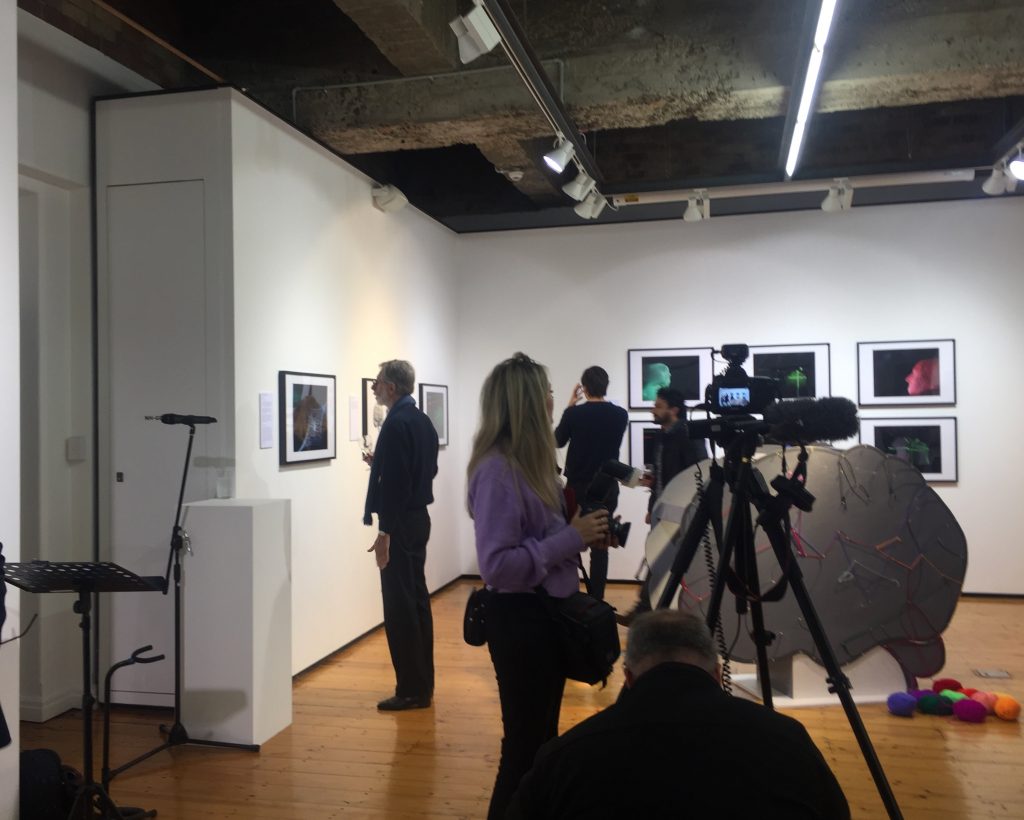From the beginning of the MA programme, I have been making binaural field recordings with the intention of incorporating a sonic dimension to my visual work. Installations commonly include ambient soundscapes, or videos with soundtracks. Lewis Bush incorporated sound into his book Shadows of the State (2018) by including barcodes linked to soundfiles. In my Roding Valley Park work, I put soundfiles alongside photographs to give a sense of the thundering and constant sound of traffic on the roads that ran overhead. I have struggled, though, in my most recent work, to see how a sonic dimension could meaningfully be incorporated.

A chance meeting with composer and sound artist Jon Drummond at the opening of the excellent Brain@wattspace exhibition (a collaboration between cognitive scientists and artists) has led me to think differently about this. Jon works in the area of ‘sonification’, which involves representing data in sound. Heyler and Drummond have recently written about two of their sonification projects:
”Heavy Metal” [which] is focussed upon the real-time analysis and sonification of the chemical elements in a painting via a camera vision system, [and] “Oratorio for a Million Souls” [which] concerns the behaviour and acoustic properties of live bee colonies manifest in the creation of real-time multi-channel sound compositions and associated sound architectures (Heyler and Drummond,2019:1).
For my own project, rather than present the soundscapes or samples from the settings I am exploring, I could (possibly incorporating environmental sounds) translate data relating to the settings into sonic form. This picks up the strand of the work which address the use of data in decision making about planning, the rendering of residents and their lifeworlds as data, and the corresponding movement in my own images between analogue and digital forms. It also fits with my intension to use maps and other form of data visualisation in presenting my work (a post about this will follow shortly). One question would be whether or not to have a real-time component in the data sonification. The sonic dimension of the work could provide a direct link to environmental changes taking place, and/or the projected population/demographic changes projected in the development of the area.
In making a case for this form of environmental data sonification, and articulating it with other forms of ‘eco-aesthetics’ (such as land art, earthworks and nature-based installation work), Heyler and Drummond (2019: 4) cite Cubitt’s (2005: 9) assertion that eco-politics is ‘the single largest unifying political discourse of the early 21st century’ and that art is uniquely placed to explore the complexity and contradictions of this period, including the role played by technology, which can act both as an instrument of domination over nature and of illumination, empowerment and critique.
References
Bush, L. 2018. Shadows of the State. London: Brave Books.
Cubitt, S. 2005. EcoMedia. Amsterdam: Rodopi.
Helyer, N. and Drummond, J. 2019. ‘Heavy Metal and the Oratorio for a Million Souls’, EasyChair. Preprint No. 971. Available online at: https://easychair.org/publications/preprint/NDGB.
